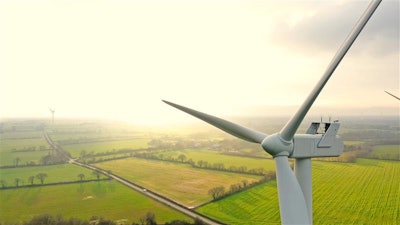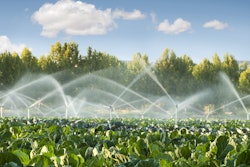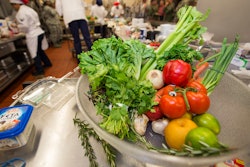
The keyword for sustainability in agriculture this year is hydroponics. Of course, most people have some vague knowledge of the process; you grow crops without soil. However, depleting resources and environmental impacts are pressing this topic to the forefront. Traditional agriculture has been a tried-and-true solution since agrarian societies developed. Yet, this form of farming also comes with its own risks and consequences. While soil-less agriculture comes with its own intricacies, it is projected to be the future of sustainable agriculture.
Converting much of today’s food supply from field agriculture to hydroponics sounds like a hefty operation. In reality, the benefits can far outweigh the costs and effort required to create more hydroponic farms. Upon review, the main benefits point not only to a more sustainable food source, but also to a more environmentally friendly solution.
Less water consumed and wasted
At first glance, this seems counterintuitive, considering that hydroponics is a water-based form of agriculture. However, this form of farming actually uses significantly less water than soil-based farming. The most efficient systems can use around 98% less water, although most hydroponic systems use at least 90% less water. Not only that, recirculating systems also allow for some of that water to be reused, saving precious resources in drought ravaged areas.
Because so little water is used, it also creates a more affordable solution when water prices become an issue for farmers. Many advanced hydroponic gardens and farms also have monitoring systems in place, so each crop receives only the water necessary for optimal growth. This can be difficult to achieve in regular farming, even with improved irrigation systems.
Minimized environmental damage
Crops need extra nutrients, or fertilizer, to create a successful harvest. This can be an issue when the fertilizer is given to crops in soil, and often creates runoff. The chemicals leach through the ground, and ultimately spread to areas with fragile ecosystems that can be easily damaged. Fertilizers aren’t the only chemicals that can seep into areas outside of a farm. Pesticides, whether applied directly to soil or sprayed over crops, are another main cause of runoff. Unfortunately, runoff is difficult to contain. However, in an enclosed hydroponic system, growers are in complete control of where nutrient saturated water goes once used. Not only that, but hydroponic farms typically use significantly less pesticides, if any.
Sustainable indoor farming also reduces the need to clear land for farm development. Ultimately, we can reduce our impact on global warming by allowing more natural land to flourish while still maintaining a critical food source.
Efficient resource use
Reducing water use is one of the major benefits of soilless agriculture. Water, however, is not the only resource we can manage and use more efficiently. A common misconception is that hydroponic systems may cut down on water usage, but those benefits are negated by a much higher use of electricity. While these systems do require ample electricity to function, their power usage is around equal to that of traditional agriculture and can be even further reduced with energy efficient equipment and grow lights. To optimize sustainability, renewable energy sources such as solar panels can be installed, meaning the farm runs on much cleaner energy.
Because farmers have so much control over their hydroponic farms, they can also optimize the nutrients used to feed their plants. Unlike field agriculture, where fertilizers may not reach their target crops in specific amounts, hydroponic farming delivers exact amounts of nutrients directly to the plants that need them.
Small footprint, big growth
Even a small hydroponic farm can typically produce the same amount of crops that it would take 4 acres to grow in soil. This means that a hydroponic farm uses a negligible amount of physical real estate, while still producing more than enough food. Not only that, these farms don’t need to be constructed in new buildings. Soil-less farming allows us to make the most use of existing structures that have no current purpose.
A sustainable farm is perhaps one of the best uses of neglected urban structures for which no other use can be found. Adding to that, it also allows farmers and logistics companies to reduce the mileage from the farm to the consumer. In turn, this means less fossil fuels are used, and less emissions are released into the atmosphere.
Growing into sustainability
It’s improbable to think that every traditional farm will be converted into a hydroponic operation in the next 20 years. However, hydroponics is a sustainable solution to create a reliable food source, regardless of local climate, poor weather conditions and other natural damage. Beyond its sheer reliability, hydroponic farming is growing because of the increasing emphasis on minimizing environmental damage, efficiently using resources and optimizing crop growth.

















